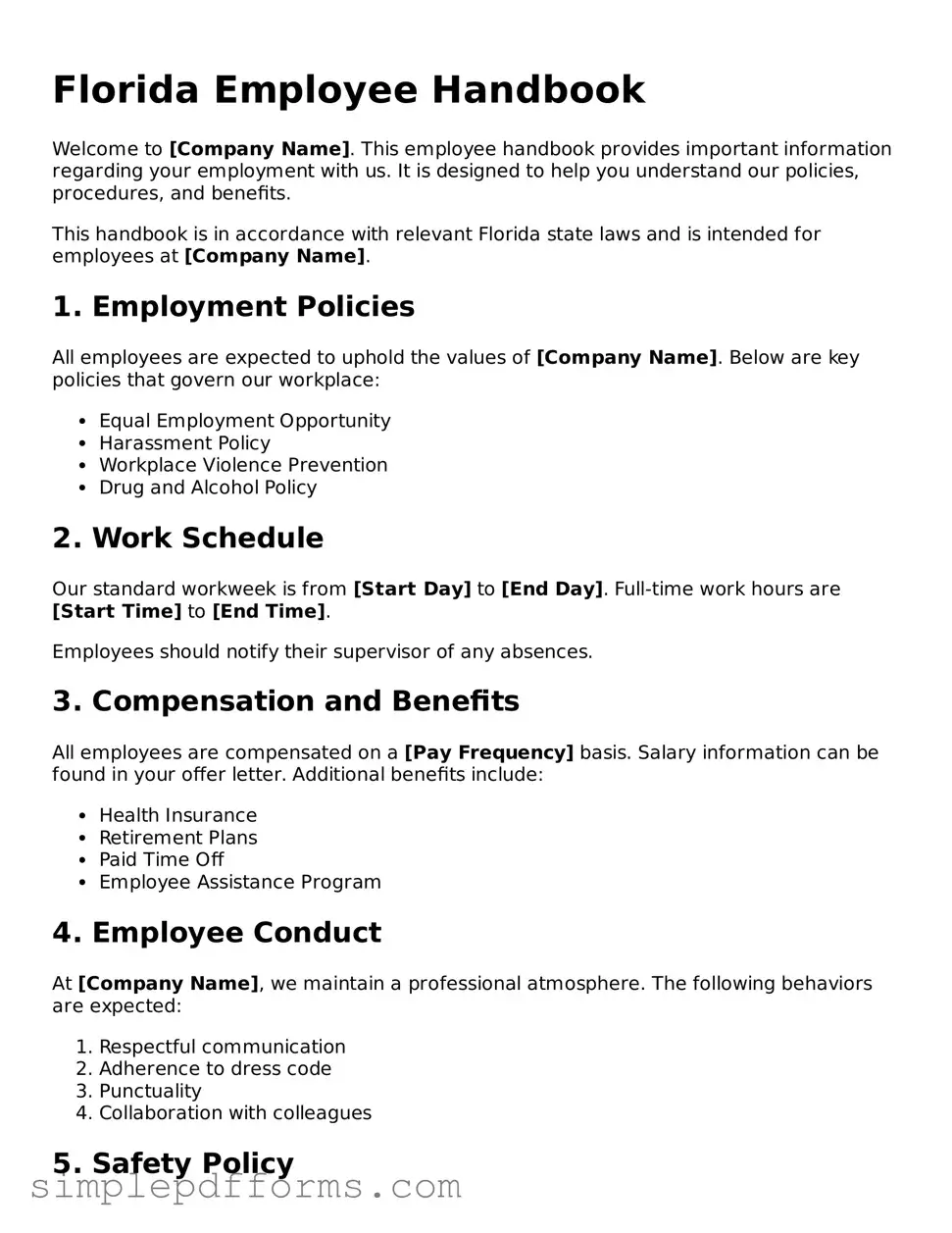Florida Employee Handbook
Welcome to [Company Name]. This employee handbook provides important information regarding your employment with us. It is designed to help you understand our policies, procedures, and benefits.
This handbook is in accordance with relevant Florida state laws and is intended for employees at [Company Name].
1. Employment Policies
All employees are expected to uphold the values of [Company Name]. Below are key policies that govern our workplace:
- Equal Employment Opportunity
- Harassment Policy
- Workplace Violence Prevention
- Drug and Alcohol Policy
2. Work Schedule
Our standard workweek is from [Start Day] to [End Day]. Full-time work hours are [Start Time] to [End Time].
Employees should notify their supervisor of any absences.
3. Compensation and Benefits
All employees are compensated on a [Pay Frequency] basis. Salary information can be found in your offer letter. Additional benefits include:
- Health Insurance
- Retirement Plans
- Paid Time Off
- Employee Assistance Program
4. Employee Conduct
At [Company Name], we maintain a professional atmosphere. The following behaviors are expected:
- Respectful communication
- Adherence to dress code
- Punctuality
- Collaboration with colleagues
5. Safety Policy
We prioritize the safety of all employees. Please report any unsafe conditions to your supervisor immediately. Regular safety training will be conducted to ensure a safe work environment.
6. Employee Acknowledgment
Upon receiving this handbook, please fill out the acknowledgment form. It confirms that you have read and understood the policies contained herein.
[Employee Signature Line]
[Date]
Thank you for being a part of [Company Name]. We look forward to working together!
